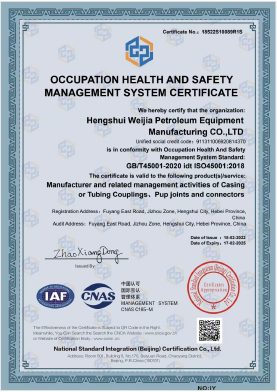- Afrikaans
- Albanian
- Amharic
- Arabic
- Armenian
- Azerbaijani
- Basque
- Belarusian
- Bengali
- Bosnian
- Bulgarian
- Catalan
- Cebuano
- Corsican
- Croatian
- Czech
- Danish
- Dutch
- English
- Esperanto
- Estonian
- Finnish
- French
- Frisian
- Galician
- Georgian
- German
- Greek
- Gujarati
- Haitian Creole
- hausa
- hawaiian
- Hebrew
- Hindi
- Miao
- Hungarian
- Icelandic
- igbo
- Indonesian
- irish
- Italian
- Japanese
- Javanese
- Kannada
- kazakh
- Khmer
- Rwandese
- Korean
- Kurdish
- Kyrgyz
- Lao
- Latin
- Latvian
- Lithuanian
- Luxembourgish
- Macedonian
- Malgashi
- Malay
- Malayalam
- Maltese
- Maori
- Marathi
- Mongolian
- Myanmar
- Nepali
- Norwegian
- Norwegian
- Occitan
- Pashto
- Persian
- Polish
- Portuguese
- Punjabi
- Romanian
- Russian
- Samoan
- Scottish Gaelic
- Serbian
- Sesotho
- Shona
- Sindhi
- Sinhala
- Slovak
- Slovenian
- Somali
- Spanish
- Sundanese
- Swahili
- Swedish
- Tagalog
- Tajik
- Tamil
- Tatar
- Telugu
- Thai
- Turkish
- Turkmen
- Ukrainian
- Urdu
- Uighur
- Uzbek
- Vietnamese
- Welsh
- Bantu
- Yiddish
- Yoruba
- Zulu
pup joint drilling
Understanding Pup Joint Drilling A Key Element in Oil and Gas Operations
Pup joint drilling is an essential concept in the oil and gas industry, primarily focusing on the connection of drill pipes and their functionality during the drilling process. In drilling operations, the efficiency and reliability of the equipment used are paramount, and pup joints play a critical role in this context.
What is a Pup Joint?
A pup joint is essentially a short section of piping used in oil and gas drilling operations to make up the overall length of the string of drill pipe. Generally, a pup joint can vary in length, but it typically ranges from 1 to 10 feet, making it shorter than standard drill pipes which usually range from 30 to 40 feet. These shorter lengths are particularly useful in cases where precise adjustments in pipe length are required, such as in drilling operations that involve complex well designs or when transitioning to different formations.
Importance of Pup Joints in Drilling Operations
The importance of pup joints lies in their ability to provide flexibility during drilling operations. When drilling a well, various factors such as the wellbore size, the type of formation being drilled, and the specific drilling techniques employed can influence the required pipe length. Pup joints enable drilling engineers to make quick adjustments without the need to replace entire strings of pipe, thus saving time and reducing costs.
Moreover, pup joints contribute to the overall integrity and safety of the equipment used. Given their shorter length and proper engineering, they can be manufactured to withstand high pressures and extreme conditions encountered during drilling. This robustness is crucial for preventing adverse incidents, such as pipe fractures or blowouts, which can lead to significant financial losses and pose safety risks.
pup joint drilling

Technical Specifications and Material Used
Pup joints are manufactured from high-quality steel that adheres to industry standards. They are often available in various sizes, diameters, and wall thicknesses to accommodate the specific requirements of different drilling projects. The common practice involves threading the ends of the joints to ensure a secure connection with other sections of the drill pipe. This threaded connection must be accurately machined to avoid leaks and ensure a tight fit under high-pressure conditions.
In addition to standard pup joints, specialized designs are often employed. For instance, some pup joints may include features such as collar designs for added strength or non-magnetic materials for specific drilling applications, particularly in measurement-while-drilling (MWD) techniques.
Applications Beyond Conventional Drilling
While pup joints are primarily associated with traditional drilling operations, they also find applications in more advanced techniques like horizontal drilling or deepwater drilling. In such scenarios, the adaptability of pup joints becomes even more significant, allowing for customized drilling assemblies that fit unique geometries and depths.
Conclusion
In summary, pup joint drilling is a fundamental aspect of oil and gas exploration and production. By facilitating the connection between drill pipes and providing the flexibility needed to adapt to various drilling conditions, pup joints enhance the overall efficiency, safety, and economic viability of drilling operations. As the industry continues to evolve with advancements in technology and increasing demands for energy, the role of pup joints will undoubtedly remain vital in optimizing drilling practices. Understanding their functionality and importance can help stakeholders make informed decisions about their drilling strategies, ultimately leading to safer and more productive oil and gas exploration.
-
Tubing Pup Joints: Essential Components for Oil and Gas OperationsNewsJul.10,2025
-
Pup Joints: Essential Components for Reliable Drilling OperationsNewsJul.10,2025
-
Pipe Couplings: Connecting Your World EfficientlyNewsJul.10,2025
-
Mastering Oilfield Operations with Quality Tubing and CasingNewsJul.10,2025
-
High-Quality Casing Couplings for Every NeedNewsJul.10,2025
-
Boost Your Drilling Efficiency with Premium Crossover Tools & Seating NipplesNewsJul.10,2025







